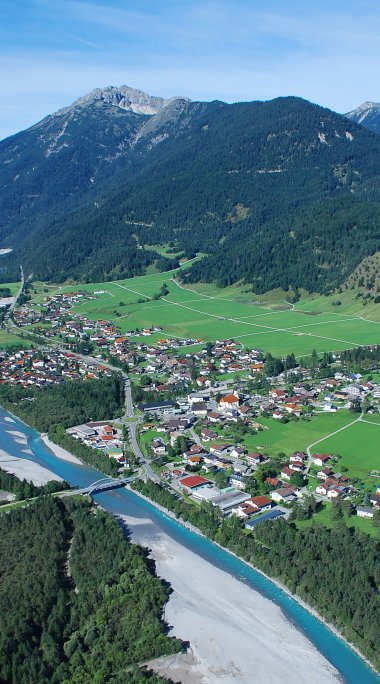Weißenbach
Weißenbach has been part of the large parish of "Aschau" since time immemorial, which also included Lechaschau, Wängle, Höfen and Vorderhornbach. According to legend, the Frankish king Pipin gave this area to St. Magnus around 750 to found a monastery in Füssen.
- Sea level: 885 m
- Inhabitants: 1.265
- Total Area: 81,85 km²
- Population density: 15/km²
- Districts: Weißenbach, Gaicht
The great upswing for Weißenbach only began after the so-called Salt or Hall Road over the Gaicht was built in 1550 for the transport of salt to the Allgäu and the Lake Constance area. Due to the constant need for transport over the steep pass, the people of Weißenbach achieved a modest level of prosperity by the standards of the time. As a result, the village expanded rapidly.
In 1632 a fortress was built at the Gaichtpass as an outpost of the Ehrenberg fortress. In Weißenbach the river Lech used to be crossed by raft. The Tyrolean sovereigns needed vast quantities of firewood for the salt works in Hall. This wood was transported by water. The largest timber raft in the Lech valley was between Weißenbach and Rieden. After the end of the large salt transports, part of the population had to go to neighboring Bavaria as seasonal workers, especially as bricklayers and plasterers. The women then had to take care of the small farming business alone during the summer and send the school-age children to the Allgäu as guardian boys or nannies. These were then the so-called "Swabian children.
In Weißenbach the carnival tradition is held high. The custom of the "Zuderer", which is "dug out" every year during carnival time and "buried" back into its chest at the village square at the end of the foolish time, goes back a long way. Its origin probably goes back to a pagan Alemannian custom. This also includes the traditional "burning of witches" and "beating of discs".




